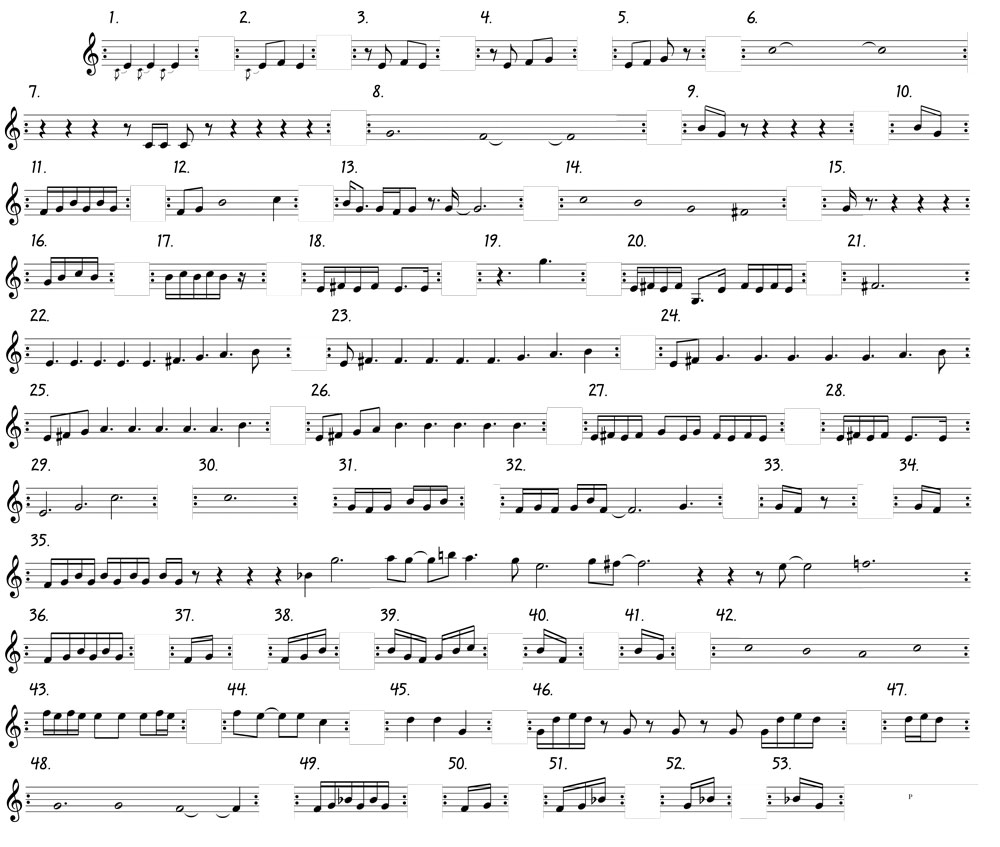Radial Grooves

A comparison between two wildly different and profoundly connected works in which the composer sets rules* for the band to play freely around a central pulse. In one, the players are almost all musical legends. In the other, they are mostly unknown. In both, the developing groove evolves and expands into surprising shapes. The first is Terry Riley's In C Mantra in a rare version from 1970 under the direction of Walter Boudreau. The second is a track from Miles Davis' 1972 On The Corner album entitled New York Girl _ Thinkin' of One Thing and Doin' Another _ Vote for Miles.
As a bonus, two additional tracks to compare: The Beach Boys 1966 version of Sloop John B from Pet Sounds and Histe Up the John B Sails by the Cleveland Simmons Group from 1935, an Alan Lomax treasure.
*NOTE:
Miles Davis apparently roamed the studio both encouraging and silencing improvising players. He executed what Butch Morris would later dub the "conduction" process. The long studio takes were ultimately edited and there are numerous reports and evidence of outtakes of value.
A scan of the score for In C is attached to this page. Here are Terry Riley's performing directions:
All performers play from the same page of 53 melodic patterns played in sequence.
Any number of any kind of instruments can play. A group of about 35 is desired if
possible but smaller or larger groups will work. If vocalist(s) join in they can use any
vowel and consonant sounds they like.
Patterns are to be played consecutively with each performer having the freedom to
determine how many times he or she will repeat each pattern before moving on to
the next. There is no fixed rule as to the number of repetitions a pattern may have,
however, since performances normally average between 45 minutes and an hour and
a half, it can be assumed that one would repeat each pattern from somewhere
between 45 seconds and a minute and a half or longer.
It is very important that performers listen very carefully to one another and this
means occasionally to drop out and listen. As an ensemble, it is very desirable to
play very softly as well as very loudly and to try to diminuendo and crescendo
together.
Each pattern can be played in unison or canonically in any alignment with itself or
with its neighboring patterns. One of the joys of IN C is the interaction of the
players in polyrhythmic combinations that spontaneously arise between patterns.
Some quite fantastic shapes will arise and disintegrate as the group moves through
the piece when it is properly played.
It is important not to hurry from pattern to pattern but to stay on a pattern long
enough to interlock with other patterns being played. As the performance
progresses, performers should stay within 2 or 3 patterns of each other. It is
important not to race too far ahead or to lag too far behind.
The ensemble can be aided by the means of an eighth note pulse played on the high
c’s of the piano or on a mallet instrument. It is also possible to use improvised
percussion in strict rhythm (drum set, cymbals, bells, etc.), if it is carefully done and
doesn’t overpower the ensemble. All performers must play strictly in rhythm and it
is essential that everyone play each pattern carefully. It is advised to rehearse
patterns in unison before attempting to play the piece, to determine that everyone is
playing correctly.�
The tempo is left to the discretion of the performers, obviously not too slow, but
not faster than performers can comfortably play.
It is important to think of patterns periodically so that when you are resting you are
conscious of the larger periodic composite accents that are sounding, and when you
re-enter you are aware of what effect your entrance will have on the music’s flow.
The group should aim to merge into a unison at least once or twice during the
performance. At the same time, if the players seem to be consistently too much in
the same alignment of a pattern, they should try shifting their alignment by an
eighth note or quarter note with what’s going on in the rest of the ensemble.
It is OK to transpose patterns by an octave, especially to transpose up. Transposing
down by octaves works best on the patterns containing notes of long durations.
Augmentation of rhythmic values can also be effective.
If for some reason a pattern can’t be played, the performer should omit it and go
on.
Instruments can be amplified if desired. Electronic keyboards are welcome also.
IN C is ended in this way: when each performer arrives at figure #53, he or she
stays on it until the entire ensemble has arrived there. The group then makes a large
crescendo and diminuendo a few times and each player drops out as he or she
wishes.
RELATED PROGRAMS

Impossible Music
RADIO SERIES
Music and mixes that aspire to challenge you, surprise you, tickle you, jostle you, and to crack you open and put you back together again.
more 






